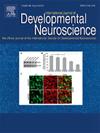Age-Related Changes in Brain Network Modularity Based on the Dynamic Sliding-Window Subnetwork Voting Method
Abstract
Background and Purpose
An understanding of the modular structure of brain functional networks and their changes with age is beneficial in uncovering the neural mechanisms that underlie cognitive decline during the ageing process. Compared to simpler networks, such as social networks, the execution of brain functions always depends on extensive interactions among multiple brain regions, which complicates the detection of accurate, stable and physiologically meaningful community structures. However, although previous work has focused on the modular organization of the brain, there has been insufficient research on its specific dynamic changes and how these evolve with age. In this case, this paper investigates the modular structure of human brain functional networks and their dynamic changes across different age groups, revealing the impact of ageing on brain network functionality.
Methods
Firstly, we constructed brain networks using a dynamic sliding-window subnetwork voting method. Further, this paper, based on public datasets and the Girvan–Newman (GN) community detection algorithm, effectively divided the community structure of brain networks and calculated modularity. It focused on analysing the brain network characteristics of 439 participants under rs-fMRI data.
Results
The results of the variance analysis indicate significant differences in modularity across different age groups. The brain networks of younger participants exhibited pronounced modular characteristics and higher efficiency in information processing. In contrast, older participants displayed a significant reduction in modularity, reflecting a trend towards functional integration.
Conclusion
These changes are closely related to the decline in cognitive abilities and the degeneration of neural connections.


 求助内容:
求助内容: 应助结果提醒方式:
应助结果提醒方式:


